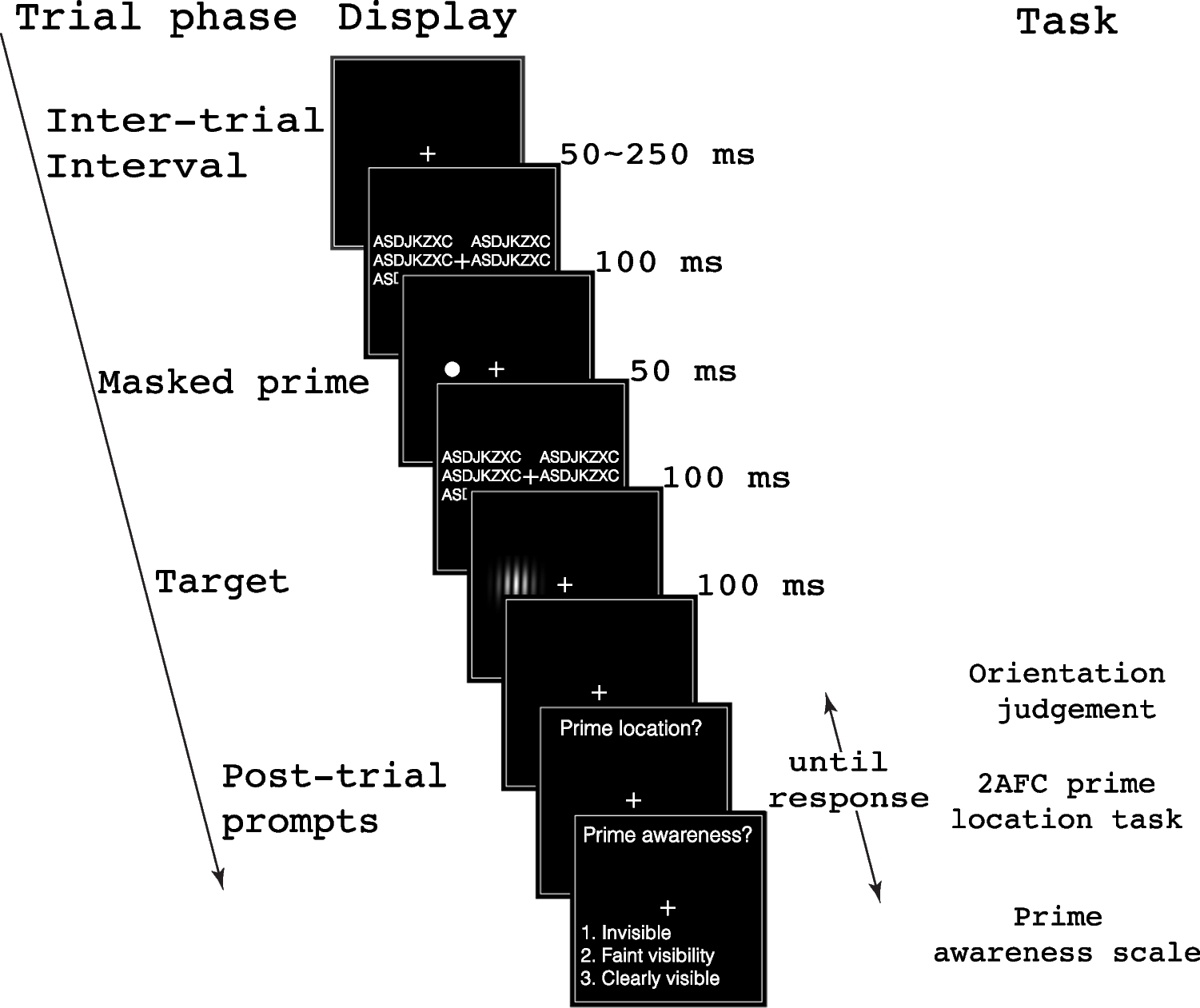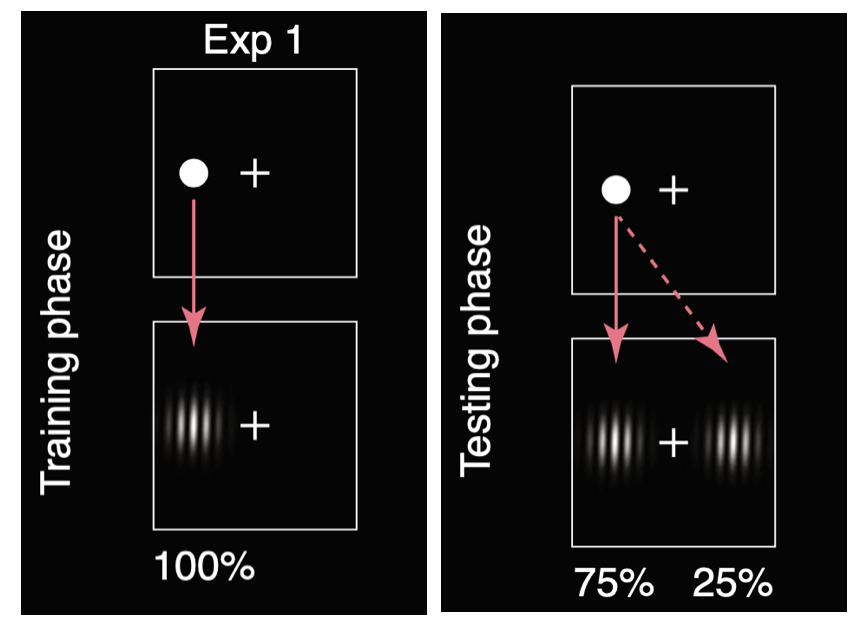When was the last time you learned something without even trying? If your answer was “never”, you might be surprised to find out that much of what we learn in our day-to-day lives comes to us fairly effortlessly. This is because we’re remarkably good at picking up on patterns in our environment. From a young age, we learn to interpret people’s feelings through their voice, facial expressions, and body language. We learn words and grammar by being exposed to language in our environment.
We can also pick on little things. For example, when I took the subway to work every day, I quickly learned that the trains on one platform would squeak more than the other as they pulled into the station. From this, I knew which side the next train was coming from right before it arrived. We pick up on all sorts of contingencies in our environment, and our ability to learn them is essential for our survival (not just our daily commute!).

Can you still learn these associations if you were never aware of the cue in the first place? After all, we would get overwhelmed if we tried to constantly pay attention to every sight and sound, looking for potential patterns. To go back to the subway example, let’s say you’re absorbed in watching very important cat videos on your phone every morning while you wait for the train and you never consciously register the squeaks. Can your brain still learn this information by implicitly tracking these sorts of patterns over time?
This is the question that Shao-Min Hung, Daw-An Wu, Leslie Escobar, Po-Jang Hsieh, and Shinsuke Shimojo (pictured below) investigate in a recent paper in the Psychonomic Society journal Cognitive, Affective & Behavioral Neuroscience.

To test this question, Hung and colleagues conducted a series of studies in which they repeatedly showed participants a prime (a dot), followed by a target (a set of bars) on either the left or right side of a computer screen. Each time, participants pressed a button to indicate whether the target was tilted clockwise or counterclockwise. They first tested participants in a condition in which the prime was always on the same side of the screen as the target. If the prime was on the left side, then the target would be as well.

Naturally, you might expect that participants would learn this association pretty quickly. If you see the prime on the right side, you know to expect the target on the right (kind of like the squeaks predicting an upcoming train). The catch, however, is that participants never actually saw the prime! The prime was shown for just 50 milliseconds – less than the blink of an eye – and in-between a set of random letters. Not only were participants unaware of the relationship between the prime and the target, but they weren’t aware of the prime at all. When asked which side the prime was on, participants were no more accurate than if they were to randomly guess.
We know that participants couldn’t see the prime, but could their brains still use this information? In other words, could their minds unconsciously “connect the dots” without even seeing them? To test this, Hung and colleagues first trained participants with the prime always on the same side as the target. Then, they tested the same participants in a condition in which the target would sometimes appear on the opposite side of the prime. If they had learned the association between the prime and the target, they should be faster in responding to the target when it was on the same side as the prime, compared to when it was on the opposite side.

This is exactly what the authors found! As shown in the graph, after training, participants were faster when the prime and target were congruent (that is, on the same side), compared to when they were incongruent (on opposite side).

What does this mean? Participants had learned an association between two events over the course of several minutes, without even being aware of it. According to Hung,
“These results suggest that our brain’s ability to extract the probability of visual items over time extends beyond our conscious experience. Such a powerful but latent skill can be evolutionarily beneficial.”
In other words, not only can you learn something without trying, you can learn things without being aware of them. And this a good thing! Next time you ride the train, imagine trying to listen for every rumbling noise and squeak, looking for informative patterns; you would give up pretty quickly. Instead, your mind may be busy learning things in the background while scrolling through cat videos on your morning commute.
Psychonomic Society article featured in this post
Hung, S. M., Wu, D. A., Escobar, L., Hsieh, P. J., & Shimojo, S. (2023). Extracting probability in the absence of visual awareness. Cognitive, Affective, & Behavioral Neuroscience, 1-11. https://doi.org/10.3758/s13415-022-01057-1
